What Is Advanced Lead Segmentation — And How Can It Boost Your Conversions in 2025?
Advanced lead segmentation helps you qualify leads and tailor the customer journey using real-time, intent-based data — not static tags or guesswork.
Instead of waiting until after a lead opts in, interactive tools like quizzes let you collect zero-party data upfront. This gives you a clear path to segment by goals, urgency, challenges, and preferences — before the first email even goes out.
🧠 In this article, you’ll learn how to:
Create self-segmenting funnels using smart quizzes
Ask targeted questions that reveal buyer intent
Connect segmentation directly to your CRM and follow-up
Use real examples and strategies that improve conversion rates
Make lead segmentation a reliable part of your growth engine
This is a practical guide to smarter segmentation — built for marketers and business owners who want results.
Your Funnel Is Leaking And You Might Not Even Realize It
Everything seems fine on the surface. Your funnel’s working, leads are coming in…
But your unsubscribe rates tell a different story. More drop-offs, less engagement… what’s going on?
I can give a good guess: your leads don’t feel connected with your business.
They signed up, but they’re not sticking around.
- Because your emails sound like they’re written for someone else.
- Because your offer doesn’t match where they are or what they need.
- Because they don’t feel seen, just sorted.
The problem isn’t traffic. It’s targeting.
Not in the ad sense. I mean the human sense.
Most funnels rely on broad buckets and surface-level data.
But that’s not enough anymore. Especially when segmented campaigns can drive 760% more revenue and double your click-through rates just by sending the right message to the right person at the right time.
This guide walks you through how to do that:
Because when your funnel feels personal, people pay attention.
Here’s What You Actually Need to Know About Advanced Leads Segmentation
Let’s skip the surface-level advice.
These are the questions real people are asking about advanced lead segmentation — pulled straight from search trends and answered with the clarity (and strategy) you actually need.
Advanced lead segmentation is the process of grouping leads based on real-time, intent-driven data — not just broad tags or demographics.
Unlike basic segmentation, which might lump people into buckets like “new subscriber” or “ebook download,” advanced segmentation uses quizzes, branching logic, and zero-party data to uncover each lead’s motivation, timeline, and challenges — before you send the first email.
This lets you qualify leads instantly and create a follow-up experience that actually feels personalized — because it is.
Because attention is scarce — and generic funnels aren’t cutting it.
Advanced segmentation gives you the context you need to send the right message to the right person, which leads to:
- Higher open and click-through rates
- Better lead-to-customer conversion
- Increased revenue per subscriber
In short, personalization boosts performance — and advanced segmentation is how you make that personalization scalable.
There’s more to segmentation than tagging by interest.
Here are the four core segmentation types you can mix and match:
- Demographic segmentation: Age, gender, location, industry, etc.
- Behavioral segmentation: On-site actions, email opens, purchase history, quiz answers
- Psychographic segmentation: Values, personality, lifestyle, decision drivers
- Zero-party data segmentation: Self-declared goals, pain points, readiness, preferences
The more layers you add — and the more context you collect — the better your targeting becomes.
Quizzes turn segmentation into a self-service funnel.
Instead of guessing what someone wants, you ask — and route them accordingly.
With tools like Thrive Quiz Builder, you can:
- Create branching logic that adapts in real time
- Score leads based on how they answer
- Deliver tailored outcomes, offers, or follow-up sequences instantly
Quizzes don’t just collect emails — they collect clarity. And that gives you an edge.
Not all data is created equal. Here’s what matters:
- First-party data: Behavior you observe — clicks, time on page, purchases
- Second-party data: Data shared with you from a trusted partner or platform
- Zero-party data: Information leads give you directly — like goals, timeline, preferences
Zero-party data is the most powerful for segmentation because it’s accurate, consent-based, and immediately actionable. Quizzes are one of the best ways to gather it.
Conditional logic lets you show different questions, content, or offers based on how a lead answers previous ones.
For example:
- If someone says they’re ready to buy → send a demo or consultation CTA
- If they’re just researching → trigger an educational nurture sequence
This is how segmentation becomes dynamic — and why interactive quiz funnels outperform static forms. Tools like Thrive Quiz Builder, Typeform, and Interact make this easy to implement without code.
Almost every major CRM or email platform supports quiz integrations through tags, webhooks, or automation tools.
Here’s how it typically works:
- A lead completes a quiz
- Their answers trigger a tag or custom field update
- Your CRM uses that data to enroll them into the right email sequence, lead scoring bucket, or sales pipeline
Whether you’re using ConvertKit, ActiveCampaign, FluentCRM, or something else — segmentation should flow directly into your automation system. No manual work required.
Great segmentation starts with great questions. Here are a few high-performing types:
- Goal-based: “What result are you hoping to achieve?”
- Timeline-based: “How soon are you looking to get started?”
- Challenge-based: “What’s been holding you back the most?”
- Experience-based: “How familiar are you with this topic/product?”
- Preference-based: “Which of these best describes your style/approach?”
You’re not just collecting answers — you’re mapping the buying journey.
Use data that reflects both engagement and revenue impact:
- Quiz completion rate (Are people finishing?)
- Opt-in rate (Are leads engaging and converting?)
- Email engagement by segment (Do personalized follow-ups perform better?)
- Sales or CLTV by segment (Are certain paths more profitable?)
If your segmentation is working, your follow-up campaigns should feel tighter — and your conversions should reflect that.
Here are a few to explore depending on your stack:
- Thrive Quiz Builder – WordPress-native, logic-based, integrates with most CRMs
- Typeform / Interact – Great for beautiful, flexible quizzes
- FluentCRM / ActiveCampaign / ConvertKit – Tag-based email systems with automation
- Thrive Suite – Build the full funnel, from quiz to landing page to follow-up
The key is choosing tools that let you collect, segment, and act on lead data — without duct-taping everything together.
This Is Why Basic Segmentation Is Letting You Down
You can’t scale a personalized funnel on surface-level data.
Segmentation by geography, job title, or gender doesn’t tell you why someone signed up. It doesn’t reveal their pain points, what they’re trying to solve, or how close they are to buying.
And that’s the problem.
Most lead forms are static. A couple of dropdowns, a checkbox for a newsletter, maybe one vague interest tag — and that’s it. No context. No nuance. No clue what to do next.
So you send a generic welcome sequence. Maybe a follow-up offer. And it falls flat.
Meanwhile:
- Your CRM is cluttered with outdated or misapplied tags
- Your messaging feels misaligned
- Your sales team gets unqualified leads with zero context
- And your entire funnel is flying blind, reacting instead of guiding
You might even be hearing it from inside the team:
“We have leads… but we don’t really know them.”
“Our follow-ups feel off, like we’re guessing.”
That’s not a tech problem. That’s a segmentation problem.
And the fix isn’t more tags, it’s better inputs. You need a way to understand buyer intent, readiness, and motivation before they ever reach your funnel’s next step.
That’s what advanced segmentation makes possible — and why it’s not optional anymore.
🔥What It’s Costing You to Fly Blind
If your segmentation isn’t evolving, here’s what you’re really losing:
- Budget — wasted on ads and emails that miss the mark
- High-intent leads — who slip away because your funnel treats them like just another name
- Automation — firing the wrong follow-ups, creating confusion, unsubscribes, and lost trust
- Sales pipeline — jammed with mismatched leads, while the right ones quietly exit
Think of it as setting the table for a perfect dinner... but inviting the wrong guests.
And the longer you delay fixing it, the more ground you lose to teams who’ve already leveled up their segmentation.
So Here’s How to Build Advanced Segmentation That Converts
If you want to move beyond generic lead forms and build a segmentation system that actually drives conversions, this is where it happens.
This section breaks down the exact steps — in the order they matter — to build a smarter, more personalized funnel using quizzes, real-time logic, and data you can actually act on. No theory. Just what works.
You’ll learn how to:
Let’s walk through it — step-by-step.
1. Start with the Right Definition (and a Real Use Case)
Before you plan your funnel, you need to know what you're actually building.
Most people confuse tagging with segmentation.
They assume that if a lead downloads a guide or clicks a certain email, that’s enough to define what they want.
But surface-level behavior doesn’t always reflect real intent.
And tags alone won’t tell you:
- Why someone signed up
- How urgent their problem is
- What kind of offer fits them best
That’s where advanced segmentation comes in.
At its core, advanced segmentation is about context.
It combines zero-party data (info the lead tells you directly) with smart logic to sort people by need, not just activity.
Instead of pushing everyone into the same sequence, you use a front-end filter — often a quiz or logic-based form — to route them down the right path before they even opt in.
If you want your funnel to convert consistently, start with a definition of segmentation that actually accounts for intent, motivation, and readiness — not just page views and form fills.
2. Clarify the Why — Personalization That Pays Off
It’s easy to treat segmentation like a technical setup task. You know, a background detail you’ll “get to later.”
But the reason to care about it now is simple: advanced segmentation improves performance across your entire funnel.
When your messages match your leads’ motivations, everything works better:
- Revenue per lead goes up
- Email engagement improves
- Conversions happen faster
- Lifetime value increases — because you're nurturing from a place of relevance
Visualize it:
A static funnel sends everyone the same 5-email welcome sequence. Some people resonate, others don’t, and high-intent leads may quietly drop off without ever hearing the message meant for them.
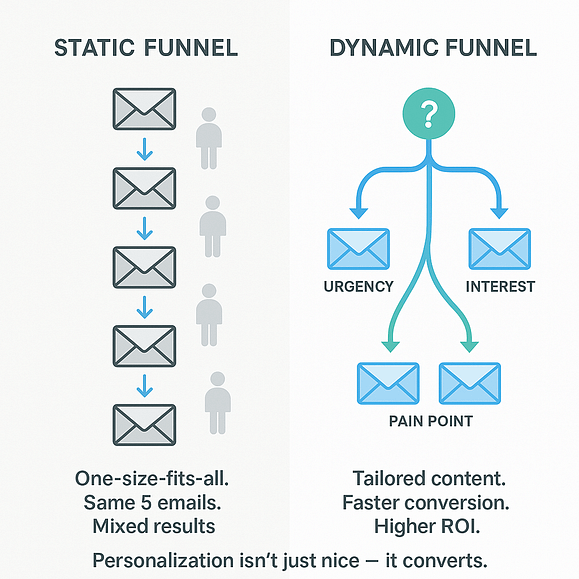
A dynamic funnel asks the right questions upfront, tags based on urgency or pain point, and triggers tailored content — fast.
The result?
Fewer missed opportunities. More qualified leads. Higher ROI on every touchpoint.
3. Choose Tools That Match Your Strategy
Before you build out your segmentation strategy, get clear on what your tools can actually handle.
You might have the perfect quiz mapped out — but if your platform doesn’t support branching, tagging, or sending data to your CRM, the whole thing bottlenecks.
That’s why tool selection comes early in the process. It shapes what’s possible, how much friction you’ll face, and how far you can take your segmentation.
Look for tools that allow you to:
- Ask layered or logic-based questions
- Apply conditional logic or scoring to guide outcomes
- Pass data into your CRM, email system, or custom fields
- Trigger automations based on individual answers — not just opt-in status
Popular tools that support advanced segmentation:
- Thrive Quiz Builder – Visual quiz logic, native tagging, seamless WordPress integration
- Typeform – Clean UI, logic jumps, CRM integrations via Zapier or native tools
- Interact – Quiz builder with branching logic and lead capture
- FluentCRM – Self-hosted WordPress CRM with deep automation capabilities
- ActiveCampaign / ConvertKit – Tags, conditions, and visual automations
⚠️ If you’re piecing together multiple tools, double-check that they pass data cleanly and in real time. A slow or broken integration will quietly kill your segmentation power.
Choosing the right tech doesn’t mean picking the fanciest tool — it means picking the one that supports the kind of experience you want to create.
4. Choose Your Segmentation Layers
Before you can personalize anything, you need to decide what actually matters about your leads.
Segmentation only works when it changes how you speak to someone or what you offer them. That means focusing on the types of data that drive messaging, timing, or positioning — not just fill your CRM with noise.
🧩 The four layers that shape smart segmentation:
- Demographic
Surface-level info like age, industry, job title, or location.
✅ Useful for B2B filtering or qualifying leads by firmographic criteria.
❌ Not enough on its own to personalize messaging. - Behavioral
Based on actions taken — what someone clicks, downloads, visits, or skips.
This helps you understand where they are in the funnel or what they’re curious about.
(Also great for lead scoring.) - Psychographic
Covers mindset: beliefs, motivations, lifestyle, preferences.
This is how you speak to values and deeper buying triggers. - Zero-party
Self-declared data — what the lead tells you directly via quizzes, surveys, forms.
Think: goals, timeline, challenges, budget.
This is the most actionable data for personalization and follow-up.
💡 Pro tip: You don’t need all four for every funnel.
Start with 1–2 high-impact layers that meaningfully change the conversation.
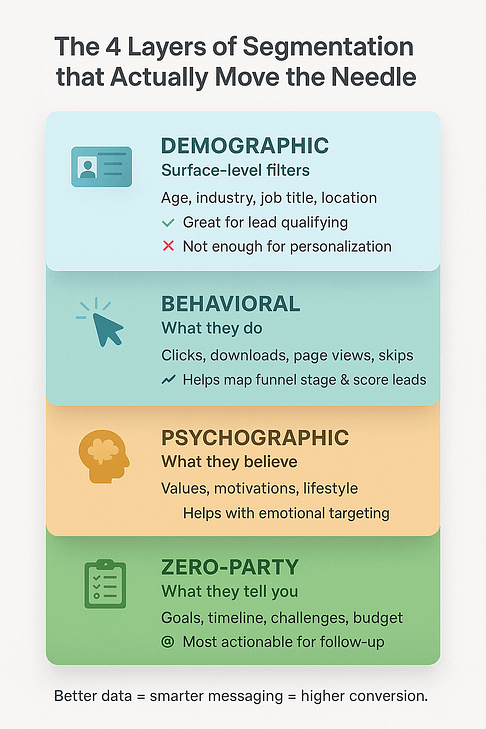
The best segmenters don’t collect the most data — they collect the right data and use it well.
5. Use Quizzes to Trigger Smart Journeys
Quizzes do more than entertain – they qualify leads, uncover intent, and guide people into the right next step without friction.
A thoughtfully designed quiz can segment your audience *while* delivering value. It gives your lead clarity and gives you the context you need to follow up effectively.
Used well, a quiz can outperform static forms and lead magnets — turning the same traffic into triple the opt-ins.
Anatomy of a High-Converting Quiz:
- Hook – A compelling question that taps into identity, challenge, or aspiration
*(e.g., “What’s your business growth style?” or “Why isn’t your website converting?”)* - Path – Branching logic that sorts leads based on behavior, urgency, or need
- Outcome – A result that feels accurate, valuable, and tied to a clear next step
*(e.g., a lead magnet, free training, or call offer)*
Quiz vs Form vs Chatbot
Tool | Strengths | Limitations |
|---|---|---|
Form | Quick, simple | No nuance, same message for everyone |
Chatbot | Conversational flow | Can feel slow or awkward to complete |
Quiz | Highly engaging, structured insights | Requires clear strategy to convert |
Flavor aside: “We replaced our lead magnet form with a quiz — same traffic, triple the opt-ins.”
Want to create a quiz that actually segments your audience?
Learn how in this step-by-step tutorial:
👉 How to Build a Quiz in WordPress That Segments and Converts with Thrive Quiz Builder
You’ll discover:
- How to plan strategic questions that reveal buyer intent
- The best way to design branching logic that guides leads to the right outcome
- How to build and style your quiz visually with Thrive Architect
- And how to connect quiz answers to custom fields, tags, and smart follow-ups
6. Know What Data Matters (and How to Use It)
Not all quiz answers are worth collecting. The goal isn’t to hoard information — it’s to ask the kind of questions that give you leverage.
When you understand what kind of data you're gathering — and how it feeds into your funnel — segmentation becomes strategic, not cosmetic.
🎯 What to Ask — and Why It’s Gold
You’re looking for answers that unlock:
- Readiness → How soon someone wants results
- Motivation → Why they’re here and what they value
- Objection triggers → What’s held them back before
These answers shape everything from your lead magnet to your sales pitch.
Data Types Breakdown
Type | Source | Use Case |
|---|---|---|
Zero-party | Voluntarily shared (quizzes, surveys) | Direct personalization, segmentation |
First-party | Behavior on your site (clicks, visits) | Retargeting, lead scoring |
Second-party | Someone else’s first-party data (shared) | Partnership targeting, ads |
Zero-party data is the most actionable — and the most underused.
Sample Smart Questions:
When to Use Logic vs Scoring:
Collect what matters — and ignore the rest. The right answers can do the heavy lifting across your entire funnel.
7. Design Logic That Scales
You don’t need a hundred paths. You need the *right* ones.
Smart segmentation isn’t about building an overengineered quiz — it’s about using clean logic to guide people into journeys that feel made for them.
When your logic is mapped well, it becomes easier to track, easier to automate, and easier to optimize over time.
Segment Without Spaghetti Logic
Conditional logic and branching aren’t there to complicate your funnel — they’re there to simplify decision-making, both for you *and* your lead.
Done right, logic helps you:
- Avoid generic follow-ups
- Serve the right offer at the right time
- Create scalable personalization without creating chaos
Example Map:
A simple branching flow based on skill level:
- Beginner path → Nurture sequence, foundational content, low-commitment offer
- Advanced path → Fast-track lead magnet, demo invite, higher-ticket solution
Same quiz, two journeys — each one more relevant and more likely to convert.
How Logic Connects to Your Tech:
💡 Pro tip:
Start with 2–3 primary branches. Once those are working, refine based on performance — not assumptions.
8. Connect Your Data Flow
Great segmentation falls apart without one thing: a clean, connected data flow.
You can ask the best questions in your quiz, but if those answers don’t move smoothly into your CRM or email platform, your personalization stops cold.
This step is where the real automation begins — and where a lot of marketers unknowingly lose qualified leads.
Integrate Segmentation Into Your CRM & Automations
Here’s how most quiz and form tools handle segmentation data:
Mechanism | What It Does | Example Use |
|---|---|---|
Tags | Labels that get applied based on quiz answers | “High-budget,” “Needs copy help” |
Custom Fields | Stores specific answers for filtering or dynamic content | “Budget: $500–1000” or “Challenge: Traffic” |
Webhooks / APIs | Sends data to another tool (e.g., CRM, spreadsheet) | Send lead data to sales team in real time |
These outputs should feed directly into your email sequences, sales pipelines, and CRM dashboards — so every lead triggers a smart follow-up, not a generic one.
🗺️ What a Smart Flow Looks Like
Step 1 → Lead takes quizStep 2 → Answers trigger tags + custom fieldsStep 3 → CRM starts personalized email automationStep 4 → Sales team views lead profile, follows up accordingly
This turns your quiz from a fun lead magnet into a conversion engine — one that helps both marketing *and* sales teams make better decisions.

Flavor aside: “We didn’t realize how broken our follow-up was until we saw the drop-off by segment. Once the data flow was mapped — and automation matched each lead — our replies doubled.”
9. Write Segmentation-Driven Questions
Every great segmentation quiz starts with the right questions — not just clever ones, but strategic ones.
If your questions don’t directly map to how you follow up, they’re just noise. You’re not writing a personality quiz — you’re designing a lead sorting system.
Quiz Questions That Reveal the Truth
Segment your leads by collecting insights across five key categories:
Question Category | What It Tells You | Sample Question |
|---|---|---|
Goal | What outcome the lead wants | “What’s your biggest priority right now?” |
Timeline | How fast they want results | “When are you hoping to make this happen?” |
Barrier | What’s stopping them | “What’s been the biggest challenge so far?” |
Familiarity | How much they already know | “How familiar are you with [your topic]?” |
Preference | Format, style, or support needs | “How do you prefer to learn or get help?” |
These answers help you customize emails, choose the right offer, and hand off higher-quality leads to your sales team.
Map Answers to Real Segments
Don’t collect answers for curiosity’s sake — know what each one unlocks:
- “Needs accountability” → tag for group coaching sequence
- “Wants quick wins” → offer mini-course or low-lift option
- “Has tried before and failed” → reframe messaging for trust and empathy
Common Mistakes to Avoid
Flavor aside: “We rewrote one question and suddenly started attracting the right clients. It was never about volume — it was about precision.”
10. Measure What Matters
How to Know It’s Working
Advanced segmentation isn’t a set-it-and-forget-it play — it’s a living system. To make it work, you need to track more than just opt-ins.
You’re not just chasing numbers. You’re looking for fit, alignment, and lift across the right segments.
Core KPIs to Watch
Here’s what to monitor once your segmentation strategy is live:
KPI | What It Tells You |
|---|---|
Quiz Completion Rate | Are people engaging or dropping off? |
Segment-Specific Opt-Ins | Which segments convert best from cold to warm? |
Segment Conversion Rate | Are the right people buying — not just clicking? |
Segment CLTV | Which types of leads drive long-term revenue and value? |
Build a Feedback Loop
Once you have data flowing, build a review rhythm:
- Monthly check-in: Which segments are underperforming?
- Quarterly audit: Are your quiz questions still segmenting accurately?
- Optimize campaigns: Adjust email copy, timing, or offers based on segment behavior
This turns segmentation into a growth lever, not just a sorting mechanism.
Tool Suggestion: Track It Simply
If you’re not using an advanced CRM dashboard, try this:
Airtable or Google Sheets to track:
- Segment tags
- Email open/click rates
- Conversions by segment
- Lifetime value by source or funnel
This visibility helps you prioritize what’s working and flag what isn’t — without digging through five tools.
💡 Pro tip: Don’t just track *how many* leads you’re getting. Track how well they fit. Alignment always outperforms volume in the long run.
Real-World Examples: Use Cases You Haven’t Tried
If you’re only using quizzes to collect emails, you’re leaving their real power untapped.
The right quiz structure can segment your leads by mindset, motivation, and readiness — giving you clear insight into how to follow up, what to offer, and when.
Here are five segmentation quiz formats you probably haven’t tried — but should:
✅ Readiness Assessment Quiz
Segment by how soon they’re ready to act
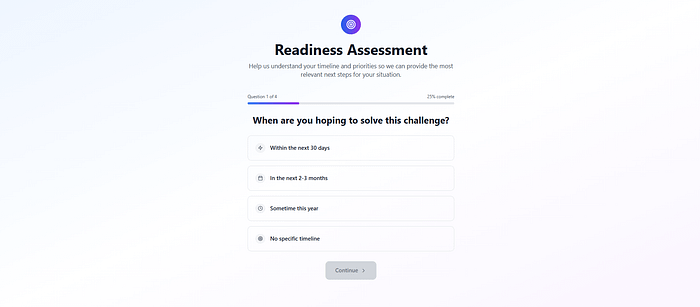
Not every lead is ready to buy. But that doesn’t mean they’re not valuable. This quiz helps you sort leads by urgency, so you don’t treat the “just Browse” crowd the same as the ones whispering take my money.
- Use timeline-based questions like:
“When are you hoping to [solve X]?” or “What’s your current priority?” - Outcomes:
- “Ready to act” → Short sales sequence or invite-only demo
- “Exploring options” → Nurture track with case studies
- “Just curious” → Educational sequence or low-commitment opt-in
💡 Great for: Coaches, consultants, agencies, high-ticket offers
🎯 Goal: Prioritize your pipeline and tailor the pace of your follow-up.
✅ Problem-Focused Quiz
Segment by pain point or core struggle

Your audience might have one offer — but five reasons they’d buy it. This quiz surfaces the lead’s most pressing problem, so your follow-up speaks directly to what’s keeping them up at night.
- Sample question:
“Which of these sounds most like your current struggle?” - Results might be:
- “Struggling to get traffic”
- “Not sure what to sell”
- “Too many ideas, not enough time”
💡 Great for: SaaS tools, course creators, service providers
🎯 Goal: Deliver hyper-relevant solutions to each pain point (and boost conversion clarity).
✅ Style/Persona Match Quiz
Segment by personality, learning style, or use-case
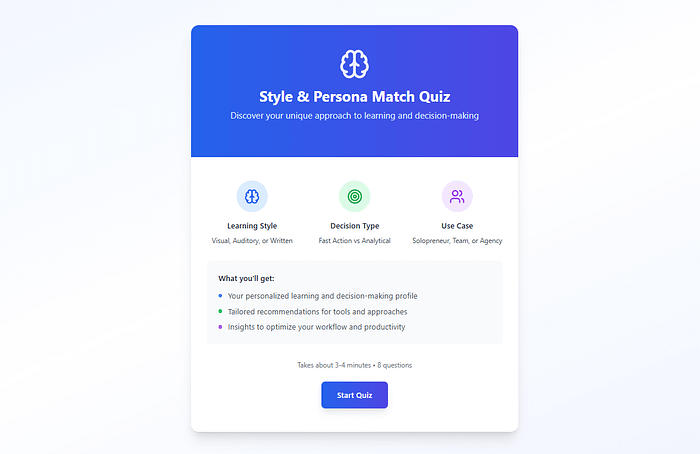
These are classic “what type are you?” quizzes — but used strategically. When someone sees themselves in a result, they’re more emotionally invested and more likely to trust the next tep.
- Outcomes can map to:
- Learning style (visual, audio, written)
- Decision type (fast action vs. analytical)
- Use-case (solopreneur vs. small team vs. agency)
💡 Great for: Ecom (clothing, skincare, supplements), coaching, memberships, SaaS
🎯 Goal: Increase product match and reduce friction in the sales journey.
✅ Story-Based Quiz
Segment through narrative immersion
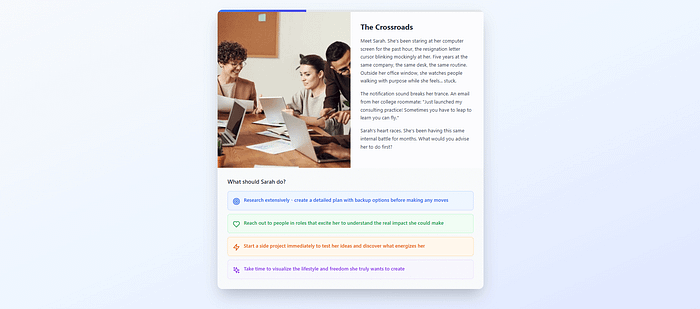
This type of quiz uses scenarios instead of direct questions. Think: “Choose your adventure” style — where a user navigates a path based on their instincts and priorities.
- Creates deeper connection by simulating a transformation
- Useful when outcomes rely on values or deeper motivations
- Works well for brands with strong emotional or identity-driven offers
💡 Great for: Personal development, wellness, career coaching, transformational services
🎯 Goal: Use story to surface identity and segment based on internal motivation — not just surface behavior.
✅ Gamified Funnel
Segment while increasing completion rates
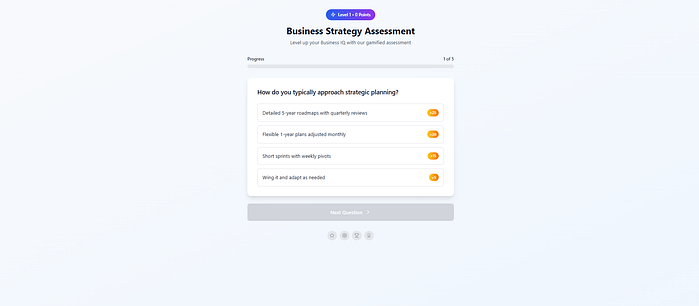
Progress bars, point systems, achievements — these aren’t just for games. They tap into behavioral psychology that drives people to finish what they start.
- Example: Add a “Score your strategy” element or “Level up your business IQ”
- Include:
- Points per answer
- Unlockable results
- Visual feedback (e.g., badges, charts)
💡 Great for: Younger audiences, course creators, software onboarding, creator brands
🎯 Goal: Boost data quality, increase quiz completion, and improve engagement pre-sale.
These aren’t just ideas — they’re conversion frameworks. And when paired with the segmentation principles from earlier, they become a powerful way to understand your audience and guide them toward the right next step.
CONCLUSION: Build Funnels That Segment Themselves
Quizzes are built for more than engagement.
They gather zero-party data, qualify leads in real time, and set up personalized journeys before anyone hits your inbox.
When your funnel adapts to the person, you stop pushing guesses and start guiding decisions.
You earn trust. You boost conversions. And you build a pipeline full of people who actually want to hear from you.
Most marketers are stuck trying to patch the gaps between traffic, forms, emails, and sales.
You don’t have to be one of them.
Ask smarter questions. Deliver sharper follow-ups. Build systems that scale *with insight* — not assumptions.
Build a Smart Funnel with Thrive Quiz Builder
Want to launch a quiz funnel in a day?
Thrive Architect + Thrive Quiz Builder gives you everything you need to:
- Create dynamic lead experiences
- Trigger personalized follow-ups
- Track conversions and improve over time
All without duct-taping five tools together or waiting on a developer.
Start smart. Segment better.

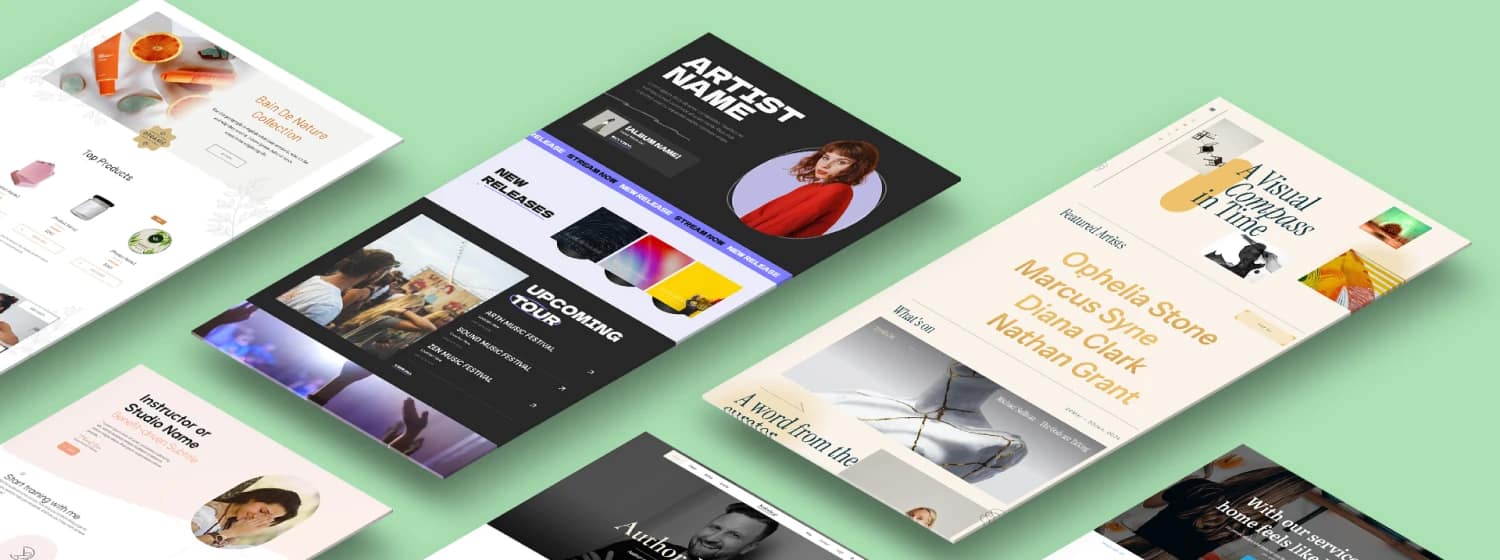

Thank you Chipo! I really enjoyed reading this article. Great work.
Glad to hear it, Marc! And thank you for reading 🙂